MONASCIN
Synonym(s):(3S,3aR,9aR)-3a,4,8,9a-Tetrahydro-9a-methyl-3-(1-oxohexyl)-6-(1E)-1-propenyl-2H-furo[3,2-g][2]benzopyran-2,9(3H)-dione;(3S,3aR,9aR)-3-Hexanoyl-9a-methyl-6-((E)-propenyl)-3a,4,8,9a-tetrahydro-3H-furo[3,2-g]isochromene-2,9-dione;Monascoflavin
- CAS NO.:21516-68-7
- Empirical Formula: C21H26O5
- Molecular Weight: 358.43
- MDL number: MFCD09260177
- SAFETY DATA SHEET (SDS)
- Update Date: 2025-08-21 22:16:43
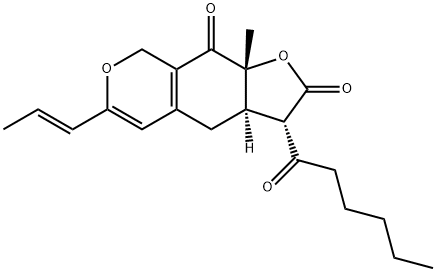
What is MONASCIN?
The Uses of MONASCIN
Monascin is an azaphilonoid pigment extracted from Monascus pilosus-fermented rice (red-mold rice). Monascin also exhibits anti-tumor-initiating activity and anti-inflammatory activity with oral administration.
Definition
ChEBI: An organic heterotricyclic compound that is 3a,4,8,9a-tetrahydro-2H-furo[3,2-g][2]benzopyran-2,9(3H)-dione that is substituted at positions 3, 6, and 9a by hexanoyl, (1E)-prop-1-en-1-yl an methyl groups, respectively (the 3S,3aR,9aR diastereoisomer). One of the azaphilonoid pigments in extracts of Monascus pilosus-fermented rice (red-mould rice), it is a potent inhibitor of car inogenesis measured against chemical- or UV-initiated, phorbol-promoted mouse skin tumours.
Biochem/physiol Actions
Monascin is one of the azaphilonoid pigments in extracts of Monascus pilosus-fermented rice (red-mold rice). It is a potent inhibitor of carcinogenesis measured against chemical or UV initiated, phorbol-promoted mouse skin tumors.
Properties of MONASCIN
| Melting point: | 145 °C |
| Boiling point: | 574.6±50.0 °C(Predicted) |
| Density | 1.18±0.1 g/cm3(Predicted) |
| storage temp. | 2-8°C |
| pka | 10.59±0.60(Predicted) |
| form | Solid |
| color | Light yellow to yellow |
| BRN | 51355 |
Safety information for MONASCIN
Computed Descriptors for MONASCIN
| InChIKey | XXKNHBAFFJINCK-RVEJDSBJSA-N |
New Products
4,4-Difluoropiperidine hydrochloride tert-butyl 9-methoxy-3-azaspiro[5.5]undecane-3-carboxylate Indole Methyl Resin N-Isopropylurea N,N-Dicyclohexylcarbodiimide(DCC) MELDRUMS ACID 5-METHYLISOXAZOLE-4-CARBOXYLIC ACID Magnessium Bis glycinate Zinc ascorbate 1-bromo-2-butyne 2-acetamidophenol 9(10H)-anthracenone Erythrosin B, 4-Piperidinopiperidine 2-((4-morpholinophenylamino) (methylthio) methylene) malononitrile 2,4-dihydroxybenzaldehyde 3-(4-morpholinophenylamino)-5-amino-1H-pyrazole-4-carbonitrile Methyl 2-methylquinoline-6-carboxylate 2,6-dichloro-4-nitropyridine 4-Bromo-2-chlorobenzonitrile 2-(benzylamino)acetic acid hydrochloride 4-(tert-Butoxycarbonylamino)but- 2-ynoic acid 3,4-dihydro-2H-benzo[b][1,4]dioxepine 1-Phenyl-1-cycloprppanecarboxylicacidRelated products of tetrahydrofuran
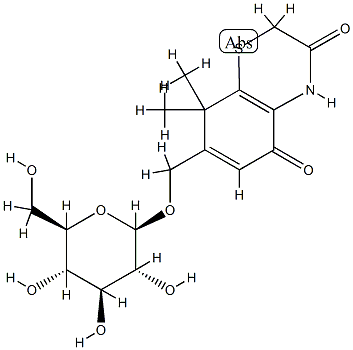
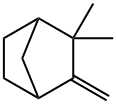
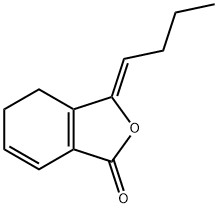
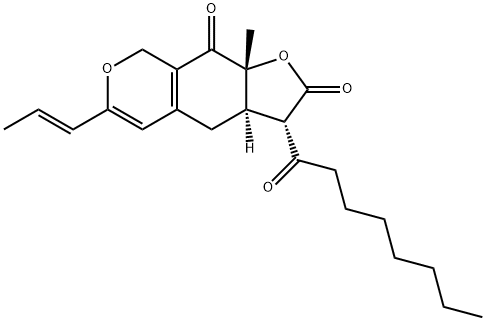
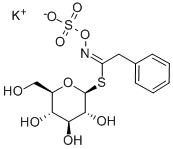



You may like
-
 Monascin CAS 21516-68-7View Details
Monascin CAS 21516-68-7View Details
21516-68-7 -
 3-(4-amino-1-oxoisoindolin-2-yl)-1-methylpiperidine-2,6-dione 98%View Details
3-(4-amino-1-oxoisoindolin-2-yl)-1-methylpiperidine-2,6-dione 98%View Details -
 614-19-7 98%View Details
614-19-7 98%View Details
614-19-7 -
 3112-85-4 Methyl phenyl sulfone 98%View Details
3112-85-4 Methyl phenyl sulfone 98%View Details
3112-85-4 -
 20677-73-0 (2,2-diethoxyethyl)methylamine 98%View Details
20677-73-0 (2,2-diethoxyethyl)methylamine 98%View Details
20677-73-0 -
 3-(4-(hydroxyamino)-1-oxoisoindolin-2-yl)piperidine-2,6-dione 98%View Details
3-(4-(hydroxyamino)-1-oxoisoindolin-2-yl)piperidine-2,6-dione 98%View Details -
 57381-49-4 2-bromo-4-chlorobenzonitrile 98%View Details
57381-49-4 2-bromo-4-chlorobenzonitrile 98%View Details
57381-49-4 -
 4,6-dichloropyrimidine-5-carbaldehyde 98%View Details
4,6-dichloropyrimidine-5-carbaldehyde 98%View Details
5305-40-8
